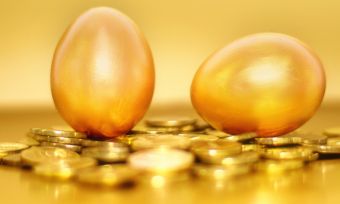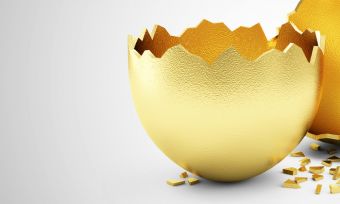Choose the right type of fund
First things first, you need to choose the right type of fund for your needs.
If you don’t choose a KiwiSaver scheme when you join up, you are assigned one from a pool of default providers.
Originally, default KiwiSaver funds were conservative funds. A conservative fund holds a high level of cash and bonds, and only 10% to around 35% in riskier growth assets, like shares. This means that while there is less risk of losing money, there is less potential for higher returns.
This type of low-risk, low-return fund isn’t really appropriate for most new KiwiSaver members, who tend to be young. So, recently, the government changed the profiles of default KiwiSaver accounts to balanced funds, providing the opportunity for more growth.
→Related article: What Do the KiwiSaver Default Scheme Changes Mean?
However, for many young investors, a growth or even an aggressive fund could be a better option. Growth funds and aggressive funds invest more in shares, so they’re more volatile, and there’s greater risk of losses. But they also offer the potential for higher returns. In the long term, therefore, they could provide a bigger nest egg for your retirement.
On the other hand, if you’re looking to withdraw your KiwiSaver in the short term, whether for a house deposit or retirement, you may want to choose a more conservative approach. Balanced or conservative funds usually deliver more modest returns than riskier fund profiles, but provide safer short-term investment options. So you won’t see your house deposit or retirement savings suddenly shrink.
Ensuring you’re in the right fund is crucial to maximising your KiwiSaver returns. So if you’re currently sitting in a default KiwiSaver scheme, or you chose a fund a while ago and don’t know if it’s still the right fund for you, it’s time to revisit.
If you’re unsure which fund profile is best for you, be sure to read our article on choosing the right fund for your needs.
Contribute more than the minimum
You only have to put 3% of your pay towards KiwiSaver. But it may not be the wisest move to contribute the bare minimum. Instead, by opting to choose a bigger contribution rate – 4%, 6%, 8%, or 10% – you could have thousands more in your KiwiSaver by the time you retire.
It’s estimated that a retiree needs at least 70% of their working-life income to sustain a comparative lifestyle throughout their retirement. There is government super, but that alone isn’t enough to cover a carefree retirement, no matter where you live, or how frugal you are. So the more you can tuck away into KiwiSaver, and the sooner you start, the better.
Yes, there are other investment options out there. But KiwiSaver is regulated to have low fees, plus it locks away your funds where they’re not easily accessible should you feel the temptation to spend them.
→Related article: Is Putting Extra Money Into KiwiSaver Worth It?
Consider past returns over the long term
When comparing the returns of different KiwiSaver funds, look at long-term results, not just how they have performed over the past 12 months.
Of course, past returns don’t promise future returns. But in an industry where future returns are never guaranteed, past performance is a useful measure.
However, it’s important not to get sucked in by great short-term gains. A fund may show huge gains in a year, but that means nothing if it comes on the back of successive years of losses.
This is especially true in the current financial climate, as many stock prices surged during the pandemic. And, as a result, many KiwiSaver funds experienced very high growth.
A fund that displays consistent steady growth, year on year, may be a better choice than a stellar short-term performer.
This is why our comparison tool allows you to compare different KiwiSaver providers and funds and look at their returns over one, three, five and seven years.
Compare KiwiSaver funds with Canstar
Make sure you’re on the right tax rate
How much tax you pay on your KiwiSaver depends on what kind of scheme you are in. There are two types of KiwiSaver scheme:
- Widely-held superannuation schemes
- Portfolio investment entities (PIEs)
Most KiwiSaver schemes are PIEs. PIEs invest your contributions in different investments, such as equities, cash, property and fixed-interest terms. The tax you pay in these schemes is called the Prescribed Investor Rate (PIR) and varies depending on your income.
If you do happen to have a widely held superannuation scheme, this is taxed at a fixed rate of 28%. If you are unsure of what type of scheme you have, you can check your KiwiSaver product disclosure statement.
How is PIR calculated?
Your PIR is calculated on how much money you earn. This can be calculated from either of the prior two financial years (ending March). This means if you made a lot last year, but not so much the year before, you can use the earlier tax year to calculate your PIR, and possibly lower the tax you pay on your KiwiSaver returns.
Do note that when calculating your PIR, you have to account for not only your taxable income, but any income earned from PIEs (such as your KiwiSaver or Sharesies portfolio).
| Taxable income | Taxable income plus any PIE income | PIR |
| $14,000 or less | $48,000 or less | 10.5% |
| $48,000 or less | $70,000 or less | 17.5% |
| All other cases | 28% |
Stay on top of it
Just because your KiwiSaver will spend years, or even decades, untouched, that doesn’t mean you should just set and forget it. It’s important to review your KiwiSaver every year, to check that it’s earning you the best returns, and if it still aligns with your savings goals.
Factors to consider include:
- Are you still in the right fund type, and does it match your objectives and your risk tolerance?
- How much are you on course to have come time to withdraw? Do you need to change your contribution rates?
- How do the fees compare with other providers and are you still getting good value?
- How are your returns? If your fund is making a loss, or poor returns compared to other funds, it may be time to change.
Compare KiwiSaver Providers with Canstar
The comparison table below displays some of the products currently available on Canstar’s database for a KiwiSaver member with a balance of $50,000 in an Aggressive fund, sorted by Star Rating (highest to lowest), followed by company name (alphabetical) – some products may have links to providers’ websites. Use Canstar’s KiwiSaver comparison selector to view a wider range of super funds. Canstar may earn a fee for referrals.
So if you’re looking for the best KiwiSaver, don’t just focus on fees and charges. Do your research, compare providers and look for the provider that best matches your appetite for risk and your long-term goals.
If you want to read more about our latest KiwiSaver Awards, click on the button below.
Compare KiwiSaver providers for free with Canstar!

About the author of this page
This report was written by Canstar Content Producer, Andrew Broadley. Andrew is an experienced writer with a wide range of industry experience. Starting out, he cut his teeth working as a writer for print and online magazines, and he has worked in both journalism and editorial roles. His content has covered lifestyle and culture, marketing and, more recently, finance for Canstar.
Enjoy reading this article?
You can like us on Facebook and get social, or sign up to receive more news like this straight to your inbox.
By subscribing you agree to the Canstar Privacy Policy




Share this article